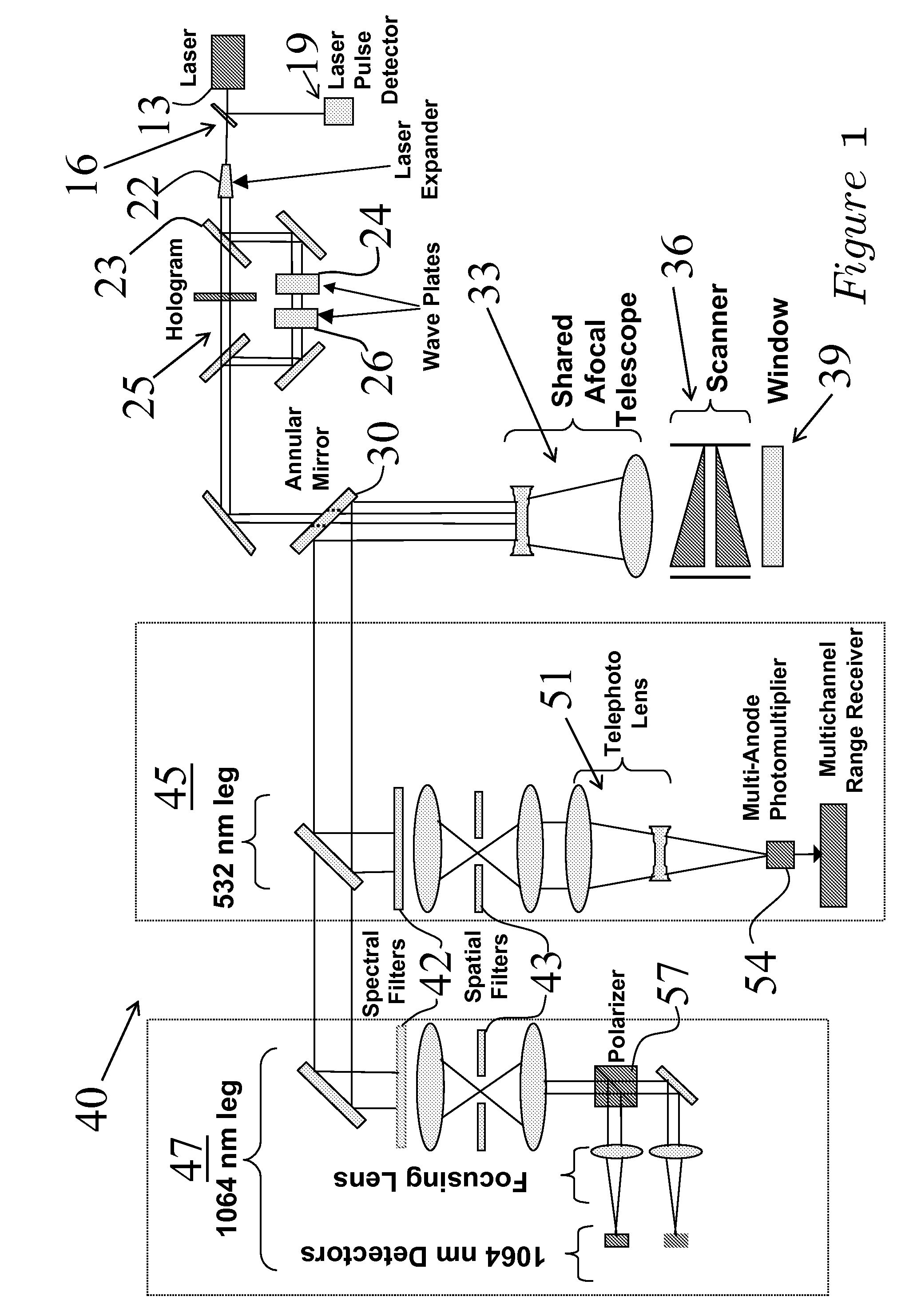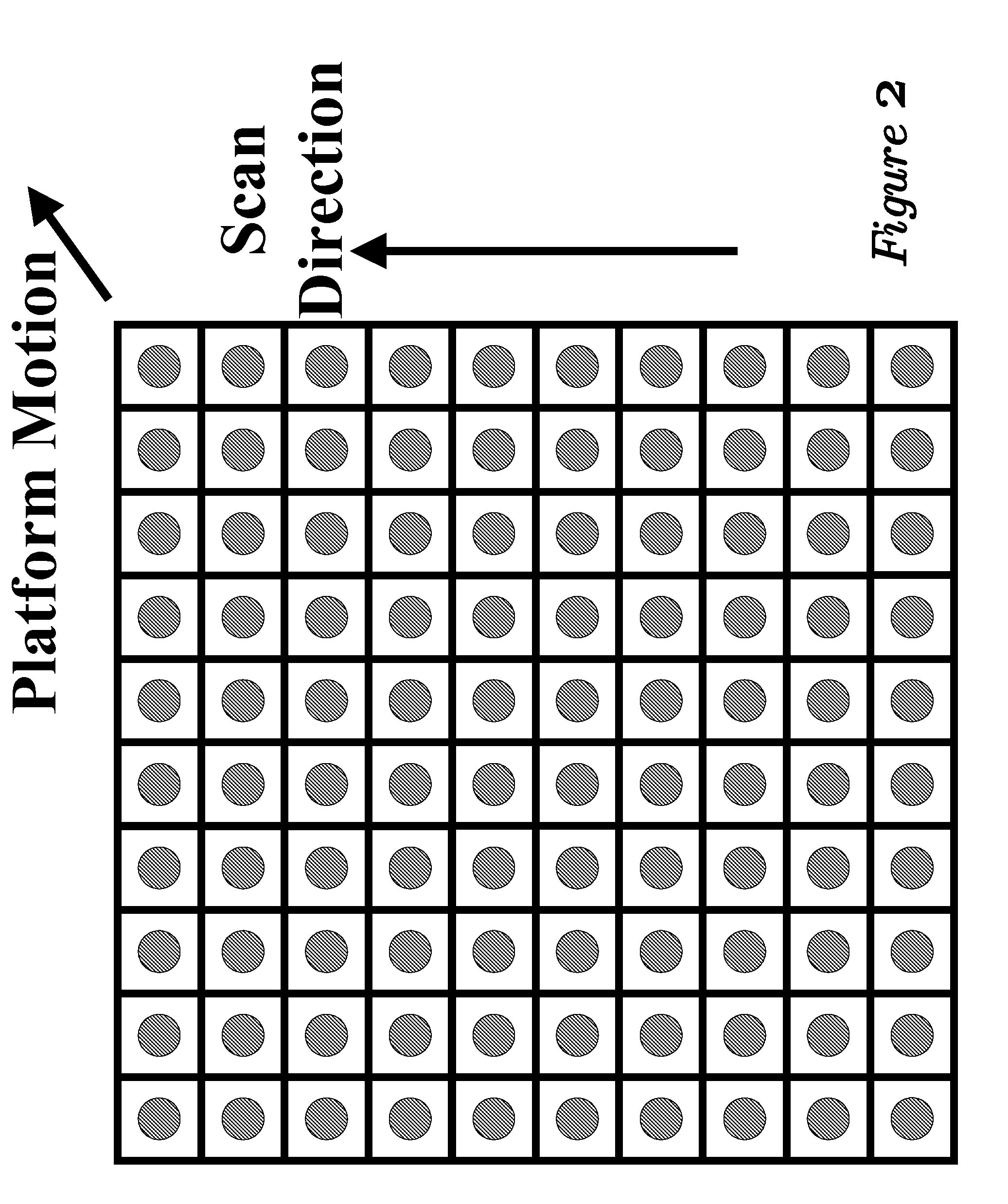Scanner/optical system for three-dimensional lidar imaging and polarimetry
a lidar imaging and optical system technology, applied in the field of scanning lidar systems, can solve the problems of inability to achieve the capability through a simple scaling of the laser fire rate or power, inability to effectively use the available laser photons, and severe limitations in instrument mass and prime power usage, so as to reduce the size, power requirements, mechanical complexity, and the effect of high repetition ra
- Summary
- Abstract
- Description
- Claims
- Application Information
AI Technical Summary
Benefits of technology
Problems solved by technology
Method used
Image
Examples
Embodiment Construction
[0029]The invention summarized above may be better understood by referring to the following description, which should be read in conjunction with the accompanying drawings. This description of an embodiment, set out below to enable one to build and use an implementation of the invention, is not intended to limit the invention, but to serve as a particular example thereof. Those skilled in the art should appreciate that they may readily use the conception and specific embodiments disclosed as a basis for modifying or designing other methods and systems for carrying out the same purposes of the present invention. Those skilled in the art should also realize that such equivalent assemblies do not depart from the spirit and scope of the invention in its broadest form.
[0030]Referring to FIG. 1, an optical schematic for a combined three-dimensional LIDAR imager / laser polarimeter according to the present invention is shown generally as 10 in FIG. 1. A small fraction of the outgoing laser p...
PUM
 Login to View More
Login to View More Abstract
Description
Claims
Application Information
 Login to View More
Login to View More - R&D
- Intellectual Property
- Life Sciences
- Materials
- Tech Scout
- Unparalleled Data Quality
- Higher Quality Content
- 60% Fewer Hallucinations
Browse by: Latest US Patents, China's latest patents, Technical Efficacy Thesaurus, Application Domain, Technology Topic, Popular Technical Reports.
© 2025 PatSnap. All rights reserved.Legal|Privacy policy|Modern Slavery Act Transparency Statement|Sitemap|About US| Contact US: help@patsnap.com



